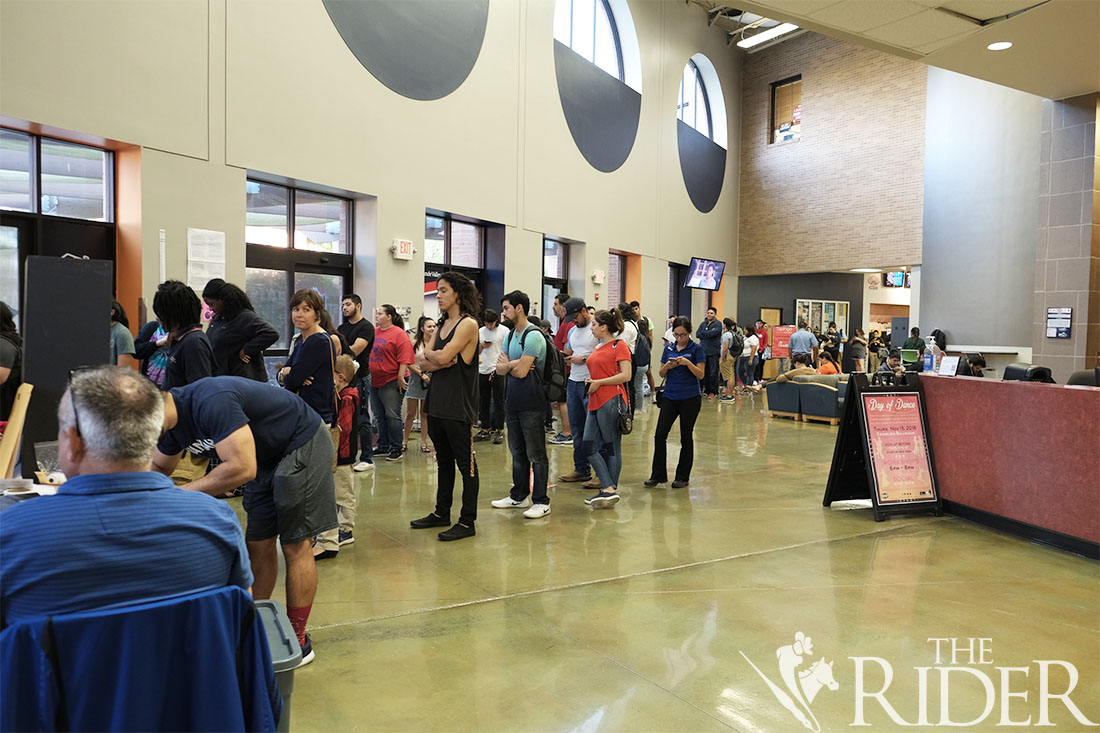
The voter turnout in the Nov. 6 election shows Texas is looking more like a swing state than a deep red state, a UTRGV political science assistant professor says.
The contest that drew the most attention was the U.S. Senate race between Republican incumbent Ted Cruz and Democratic challenger Beto O’Rourke. Cruz won re-election in the tight race. The total number of votes cast in that race was 8,326,216, according to the Texas State of Secretary website. Also running in that race was Libertarian Neal Dikeman.
Natasha Altema-McNeely, a UTRGV political science assistant professor, said O’Rourke’s grassroots campaign made him known to the public, not only in Texas, but outside. And, although Cruz won, the results of the race were not what was expected.
“That’s one of the biggest lasting impacts for a state like Texas, where Republicans have been in control of the state politics for the last 15 to 20 years and a little bit longer,” Altema-McNeely said. “When you look at the margin of victory, it was smaller than anyone ever anticipated.”
Charles Olney, a UTRGV political science assistant professor, said these results mean that people who did not vote before, turned out and suggest that Texas is looking more like a swing state than a deep red state.
Mark Kaswan, a political science associate professor, said the voter turnout was far superior than what it had been in past midterm elections.
“Midterm elections are typically much lower than presidential elections and, in fact, Cameron County came close to … its all-time record, including presidential elections, which is pretty remarkable,” Kaswan said. “Both Cameron and Hidalgo counties were, I mean, they were within a few points of each other–Cameron County with about 38 percent, Hidalgo County with 42 percent. And, we can celebrate the progress.
“… It still means that six out of every 10 voters, six out of 10 registered voters in Cameron and Hidalgo Counties did not vote.”
The Texas Tribune (texastribune.org) reported a 53 percent voter turnout for Texas.
Compared with previous elections, there was an increase in young and Hispanic voters, but there is still room for improvement, according to Altema-McNeely.
Asked why Texas remains a red state, Altema-McNeely replied Republicans have steadily been in control for the last 20 years.
“I think a lot of it is that they are, a lot of voters are conservative in their outlooks and, especially, outside of the [Rio Grande] Valley, but also within the Valley as well,” she said. “I think this part is important, that the future of Texas politics is up in the air because you have a growing and changing demographic and that’s the Hispanic population and, of course, the young.”
Olney said that voter turnout may be a reason for Texas being a red state.
“If you look at the percentage of people who are likely voters … the likely voters screening includes a lot of people that are sort of traditional, conservative Republican-leaning voters,” Olney said. “That’s been a dominant force in Texas.”
After the elections, the Democrats are now the majority in the U.S. House of Representatives. Kaswan said Texas played a part in that.
“One thing that it means is that Texas will have less power because a lot of very powerful Texas Republicans were chairs of important committees in the House of Representatives and one of them lost [his] seat, Pete Sessions, but the Republicans will no longer be chairs of any committees in the U.S. House,” Kaswan said.
He said the Democrats will be in a much stronger position to effect any kind of legislation that comes out of Congress and the Republicans in the Senate will have to work with them.
Altema-McNeely said regardless of how people might feel about the results, the election produced historical firsts.
“For instance, I believe the first openly gay governor was elected [in] Colorado,” Altema-McNeely said, adding that two Muslim women were elected to the U.S. House of Representatives, along with two Latinas from Texas, for the first time ever.
Tamara Longoria, a political science senior, said this was the first major election she voted in and conducted her own research on the candidates.
“Since I turned 18, I have been voting in, like, you know, all the local elections, but this is, like, the biggest one that I’ve participated in so far,” Longoria said. “It was pretty exciting.”
She said that the voting stations at UTRGV were convenient for students and encouraged them to vote.
“I know that a bunch of people don’t think that their vote matters, but it really does matter, especially in small communities like in Brownsville,” Longoria said. “Your vote, I mean, it’s your voice, like, it’s going to count.”





